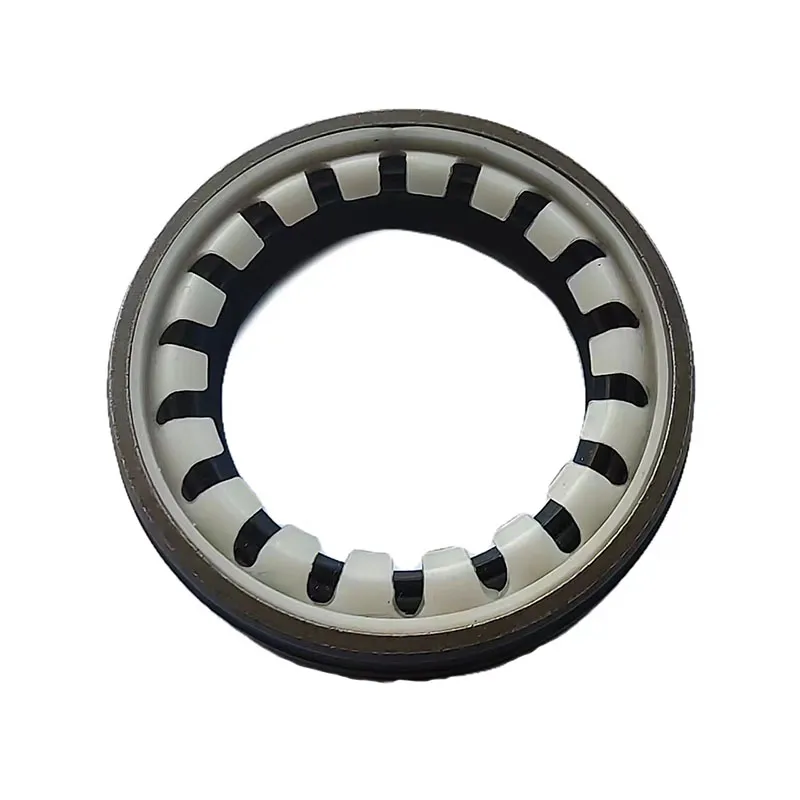inner drive shaft seal
Understanding Inner Drive Shaft Seals Importance, Function, and Maintenance
Inner drive shaft seals are critical components in modern vehicles, playing a vital role in the overall functionality and longevity of the drive shaft system. The drive shaft is responsible for transmitting torque and rotation from the vehicle’s engine to the wheels, enabling motion. Within this complex mechanism, the inner drive shaft seal ensures that the lubricating fluid remains contained, preventing leaks and protecting essential parts from dirt and debris. This article will delve into the significance, functions, and maintenance of inner drive shaft seals.
The Importance of Inner Drive Shaft Seals
The inner drive shaft seal is located where the drive shaft connects to the differential or transmission, creating a barrier that retains lubrication while safeguarding the internal components from external contaminants. The importance of this seal cannot be overstated. Without it, the lubrication necessary for smooth operation would escape, leading to increased friction and wear.
Additionally, the entry of dirt and water can result in extensive damage to the drive shaft assembly, potentially leading to costly repairs or even complete failure. Regular maintenance and timely replacement of a worn or damaged inner drive shaft seal can contribute significantly to a vehicle's reliability and performance.
Function of Inner Drive Shaft Seals
Inner drive shaft seals serve a dual purpose containment and protection. Primarily, they are designed to hold the lubricating oil (or grease) within the assembly. The lubricant helps minimize friction between the moving parts, facilitating a smoother operation. Over time, as the vehicle experiences wear and tear, the seal may become brittle or develop cracks, which can result in leakage.
The second essential function is protection. The inner drive shaft seal acts as a barrier against dirt, moisture, and other foreign materials. This is particularly important in harsh driving conditions, where exposure to dirt and water can lead to corrosion and eventual failure of the drive shaft system.
Signs of a Failing Inner Drive Shaft Seal
Recognizing the signs of a failing inner drive shaft seal is crucial for vehicle maintenance. Common indicators include
1. Oil Leaks One of the most obvious signs is the presence of oil spots under the vehicle. If the seal is compromised, oil may begin to leak out, leading to reduced lubrication levels in the drive shaft system.
inner drive shaft seal

2. Unusual Noises A failing seal can lead to inadequate lubrication, causing metal-on-metal contact within the drive shaft assembly. This may result in grinding or clunking noises during operation.
3. Vibration A damaged inner drive shaft seal can cause imbalance in the drive shaft, leading to noticeable vibrations while driving.
4. Warning Lights In some modern vehicles, the onboard diagnostics system may detect irregularities in the drive shaft assembly and trigger a warning light on the dashboard.
Maintenance of Inner Drive Shaft Seals
To prolong the life of inner drive shaft seals and ensure optimal performance, several maintenance practices should be observed
- Regular Inspections Routine checks can identify early signs of wear or damage. Inspecting the seals during vehicle servicing can help catch potential failures before they escalate.
- Change the Lubricant Keeping the drive shaft properly lubricated is essential. When replacing the lubricant, make sure to use the recommended type for your vehicle to avoid any issues with seal compatibility.
- Environmental Considerations If you often drive in harsh conditions, take extra precautions. Washing the undercarriage of your vehicle can help remove dirt and debris that may compromise the seals.
- Timely Replacement If a seal shows signs of wear, replacing it promptly reduces the risk of additional damage to the drive shaft assembly and prevents costly repairs in the future.
Conclusion
Inner drive shaft seals, while often overlooked, are essential for the proper functioning of a vehicle's drive shaft system. Their role in maintaining lubrication and protecting against contaminants is crucial for efficiency and longevity. By recognizing the signs of seal failure and adhering to a preventive maintenance schedule, vehicle owners can enhance the reliability and performance of their automobiles. In a world where vehicle components are continually stressed, ensuring the integrity of inner drive shaft seals is a small yet significant step toward optimal vehicle operation.
-
The Ultimate Guide to Boat Propeller Bearings and Trailer Wheel Bearings
News Jul.31,2025
-
The Essential Guide to Marine Bearings and Boat Trailer Wheel Bearings
News Jul.31,2025
-
The Complete Guide to Heavy Duty Seals: Protecting Doors and Spaces Efficiently
News Jul.31,2025
-
Essential Guide to Marine Shaft Bearings and Boat Trailer Axle Bearings
News Jul.31,2025
-
Comprehensive Guide to Marine and Trailer Bearings for Safe Boating and Transport
News Jul.31,2025
-
Comprehensive Guide to Automotive Oil Seals: Protecting Your Engine and Shafts
News Jul.31,2025
-
Understanding Automotive Oil Seals: Essential Components for Engine and Shaft Protection
News Jul.30,2025
Products categories















